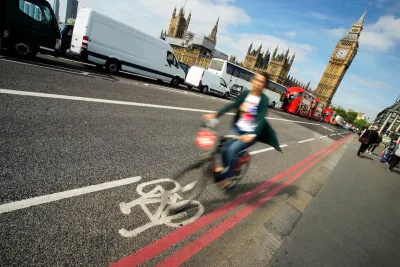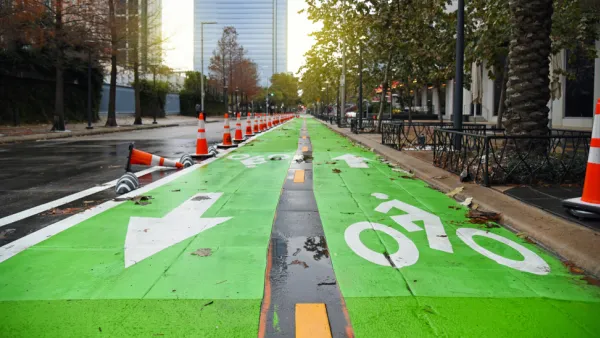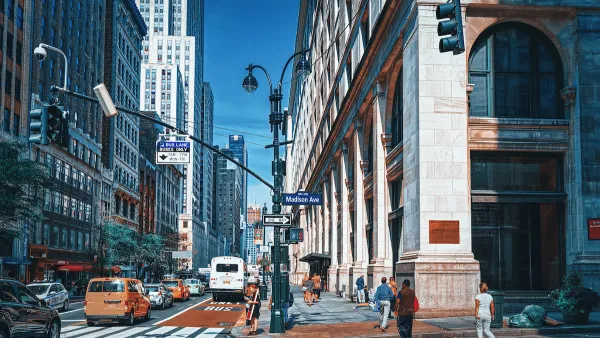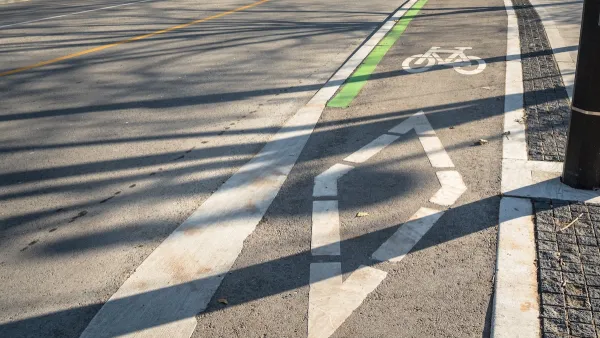Bike infrastructure tends to make vehicle travel faster, improve road safety, and bring more revenue to local businesses.

In an article for CBC, Nicole Mortillaro highlights research from cities around the world that shows that, despite popular misconceptions, bike lanes do not increase traffic congestion.
The article is in part a response to a contentious proposed Ontario, Canada law that would “would require municipalities to get provincial approval to install any bike lanes that would remove a lane of vehicle traffic.”
According to studies, dedicated bike lanes increase the number of people biking and reduce the number of cars on the street. “Bike Share Toronto statistics show that ridership on its network of shared bikes has increased dramatically since 2015, when 665,000 bike trips were made annually. In 2023, that shot up to 5.7 million trips.”
In New York City, the average time it takes cars to travel on a major thoroughfare decreased from 4.5 minutes to 3 minutes after bike lanes were installed. “Other case studies found either no impacts on traffic, or minimal delays — anywhere from a few seconds to just over a minute.”
The article highlights other studies from Canada and beyond, noting that bike lanes are also shown to increase safety for pedestrians by decreasing traffic speeds. And in many cases, they also bring additional revenue to local businesses.
FULL STORY: Do bike lanes really cause more traffic congestion? Here's what the research says

National Parks Layoffs Will Cause Communities to Lose Billions
Thousands of essential park workers were laid off this week, just before the busy spring break season.

Retro-silient?: America’s First “Eco-burb,” The Woodlands Turns 50
A master-planned community north of Houston offers lessons on green infrastructure and resilient design, but falls short of its founder’s lofty affordability and walkability goals.

Delivering for America Plan Will Downgrade Mail Service in at Least 49.5 Percent of Zip Codes
Republican and Democrat lawmakers criticize the plan for its disproportionate negative impact on rural communities.

Test News Post 1
This is a summary

Test News Headline 46
Test for the image on the front page.

Balancing Bombs and Butterflies: How the National Guard Protects a Rare Species
The National Guard at Fort Indiantown Gap uses GIS technology and land management strategies to balance military training with conservation efforts, ensuring the survival of the rare eastern regal fritillary butterfly.
Urban Design for Planners 1: Software Tools
This six-course series explores essential urban design concepts using open source software and equips planners with the tools they need to participate fully in the urban design process.
Planning for Universal Design
Learn the tools for implementing Universal Design in planning regulations.
EMC Planning Group, Inc.
Planetizen
Planetizen
Mpact (formerly Rail~Volution)
Great Falls Development Authority, Inc.
HUDs Office of Policy Development and Research
NYU Wagner Graduate School of Public Service





























